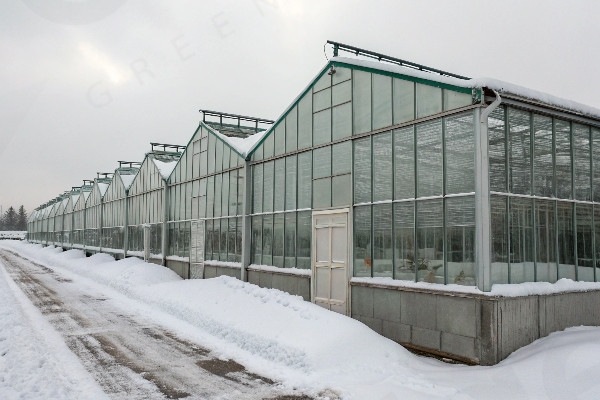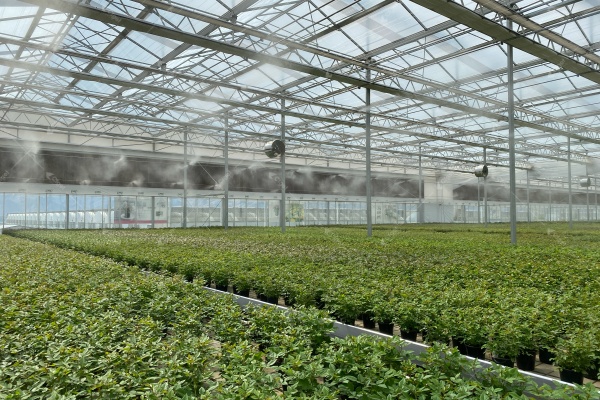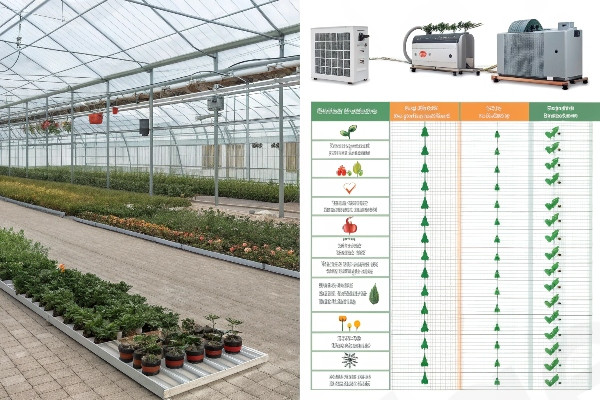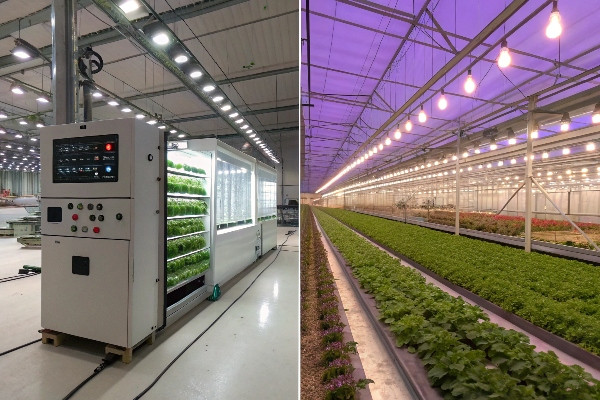Cannabis cultivation demands precision. Without the right greenhouse specifications, growers face poor yields, quality issues, and potential regulatory non-compliance that can destroy profitability.
An optimal marijuana greenhouse combines precise climate control, efficient supplemental lighting, robust security features, and appropriate glazing materials. These technical elements create the controlled environment cannabis plants need to thrive year-round while meeting regulatory requirements.
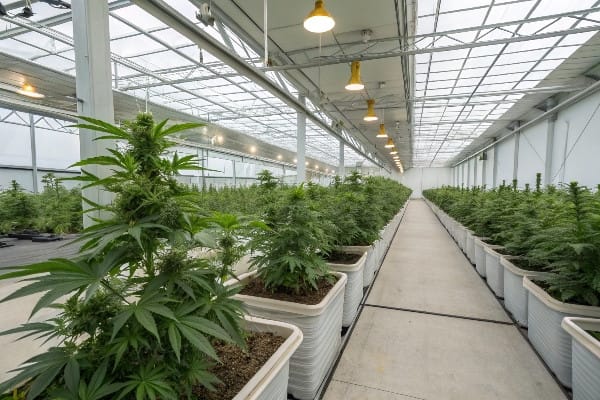
I’ve worked with cannabis cultivators across different regions for many years now. During this time, I’ve seen how proper greenhouse design directly impacts both yield quality and quantity. My team at CFGET has developed specialized solutions for cannabis cultivation that address the unique challenges of this crop. Let me share what we’ve learned about creating the perfect environment for cannabis.
Don’t Miss:——Setting Up Your Blueberry Greenhouse: Key Requirements for Success?
You might like:——Commercial Cannabis Greenhouses: The Ultimate Guide to Design, Setup & Optimization
What is the Best Climate Control System for Cannabis Greenhouses?
Cannabis plants are extremely sensitive to environmental fluctuations. Without precise climate control, your crop faces stunted growth, reduced potency, and increased vulnerability to mold and pests.
The ideal climate control system for cannabis greenhouses combines HVAC, dehumidification, and automated control systems to maintain temperatures between 70-85°F (21-29°C) during growth and relative humidity between 40-70% depending on growth stage.

The climate control system is truly the heart of any successful cannabis greenhouse operation. Over the years, I’ve found that an integrated approach works best, combining several technologies that work together to create the perfect environment. A comprehensive climate control system for cannabis must address temperature, humidity, air circulation, and CO2 levels—all factors that significantly impact plant development.
Temperature management is particularly critical. Our data shows cannabis plants thrive in daytime temperatures between 70-85°F (21-29°C) during vegetative growth, with slightly lower temperatures during flowering (65-80°F/18-26°C). Night temperatures should drop by 5-10°F to mimic natural conditions. This temperature differential triggers important physiological processes in the plants.
Humidity control deserves equal attention. Young plants and clones prefer higher humidity (65-70%), while flowering plants need drier conditions (40-50%) to prevent mold and mildew. A robust dehumidification system is essential, especially in the dense canopy areas where air stagnation can create microclimates. I recommend using both active dehumidifiers and proper ventilation systems.
Carbon dioxide enrichment can significantly boost yields when implemented correctly. Most commercial growers aim for CO2 levels between 1,000-1,500 ppm during the day (compared to the natural 400 ppm). We typically install CO2 generators or compressed CO2 systems with automated controllers that maintain precise levels.
Perhaps most importantly, these systems must work in harmony through a central environmental control system. The controllers we install allow for precise adjustments based on growth stage, with data logging capabilities that help growers optimize their environmental recipes over time. I’ve seen yields increase by 20-30% simply by implementing more sophisticated control systems that maintain consistent conditions.
Supplemental Lighting Solutions for Year-Round Cannabis Production in Greenhouses
Natural light varies by season and location, creating inconsistent growing conditions. Without proper supplemental lighting, cannabis crops suffer from reduced yields, lower potency, and unpredictable harvest schedules.
The most effective supplemental lighting for cannabis greenhouses combines HPS and LED technologies, delivering 600-1000 μmol/m²/s PPFD with customizable spectrums that can be adjusted throughout growth stages while minimizing electricity usage.

Light is life for cannabis plants. I’ve seen firsthand how proper lighting transforms a mediocre operation into a highly productive one. Supplemental lighting isn’t just about adding more light—it’s about providing the right spectrum, intensity, and duration at each growth stage.
When designing lighting systems for our cannabis greenhouse clients, we consider several key factors. First is the daily light integral (DLI), which measures the total amount of photosynthetically active radiation (PAR) delivered to plants over 24 hours. Cannabis typically requires a DLI of 20-40 mol/m²/day for optimal growth. In many regions, natural sunlight alone cannot provide this consistently year-round.
The lighting technology selection greatly impacts both plant development and operational costs. High-Pressure Sodium (HPS) lights have traditionally dominated the industry due to their high output and relatively low cost. However, they generate significant heat and have a spectrum heavy in the yellow-red range. LEDs, while more expensive upfront, offer distinct advantages: they produce less heat, can be placed closer to plants, last longer, and provide customizable spectrums.
In my experience, a hybrid approach works best for most commercial operations. We often install LEDs with enhanced blue and red spectrums for vegetative growth areas, while using efficient HPS fixtures in flowering sections where the red-dominant spectrum promotes bud development. This maximizes the benefits of both technologies while managing energy costs.
Light uniformity is another critical factor often overlooked. Uneven light distribution creates inconsistent plant development across your crop. We design lighting layouts using photometric planning software to ensure a uniform PPFD (Photosynthetic Photon Flux Density) across the canopy. Properly spaced fixtures with appropriate reflectors can make a significant difference in light distribution.
For photoperiod-dependent cannabis strains, light deprivation capabilities are essential. Our greenhouse designs incorporate automated blackout systems that can create precise day/night cycles regardless of the natural daylight hours. This allows for multiple harvest cycles per year, significantly increasing annual yield per square foot.
Essential Security Features for Commercial Cannabis Greenhouse Facilities
Cannabis facilities face strict regulatory compliance requirements and security threats. Inadequate security systems risk theft, regulatory penalties, and even facility shutdown that could devastate your investment.
A comprehensive cannabis greenhouse security system1 must include perimeter fencing, access control systems, 24/7 video surveillance with 90-day storage, motion sensors, and proper lighting around the facility perimeter while meeting all local regulatory requirements.

Security isn’t just about preventing theft—it’s about protecting your investment and ensuring regulatory compliance. Having worked with cannabis operations across different jurisdictions, I’ve seen how security requirements vary, but certain fundamental elements remain consistent regardless of location.
The first layer of defense begins with the perimeter. We typically recommend industrial-grade fencing at least 8 feet high with barbed wire topping, surrounding the entire facility. Entry points should be limited and controlled through electronic access systems that track personnel movement. Many of our clients implement key card or biometric access systems that create detailed logs of who entered which areas and when—a feature that both improves security and helps with regulatory compliance.
Video surveillance forms the backbone of any cannabis security system. Cameras should cover all areas where plants are present, processing areas, entrances, exits, and the perimeter. The systems we install typically include high-definition cameras with infrared capability for night vision, connected to digital video recorders that store footage for at least 90 days (though some jurisdictions require longer retention periods).
Cannabis-specific security concerns also include odor control and visual screening. Many regulations require that cannabis plants not be visible from public areas, and odor mitigation systems may be mandated to prevent nuisance complaints from neighbors. Our greenhouse designs often incorporate privacy screening and industrial-grade carbon filtration systems to address these issues.
Alarm systems add another crucial layer of protection. We implement motion detectors, door/window sensors, glass break detectors, and silent alarm capabilities connected to monitoring services. Many of our clients opt for systems that send immediate alerts to facility managers’ mobile devices when triggered.
Perhaps most importantly, security systems must be integrated with backup power sources. A security failure during a power outage creates significant vulnerability. Our designs typically include backup generators that automatically activate during power failures to keep critical security and environmental control systems operational.
Employee protocols are the human element of security that shouldn’t be overlooked. We help clients establish standard operating procedures for visitor management, reporting suspicious activity, and handling security breaches. Regular security audits and drills ensure these protocols remain effective over time.
Greenhouse Glazing Options (Glass vs. Polycarbonate vs. Film): Pros and Cons for Marijuana Cultivation
Choosing the wrong glazing material leads to poor light transmission, inadequate insulation, and structural issues. This translates to lower yields, higher energy costs, and potential crop failure.
For cannabis greenhouses, tempered glass offers 90%+ light transmission and longevity but at higher cost, while polycarbonate provides better insulation and diffused light, and polyethylene film delivers affordability with shorter lifespan—each suitable for different climate zones and budget considerations.
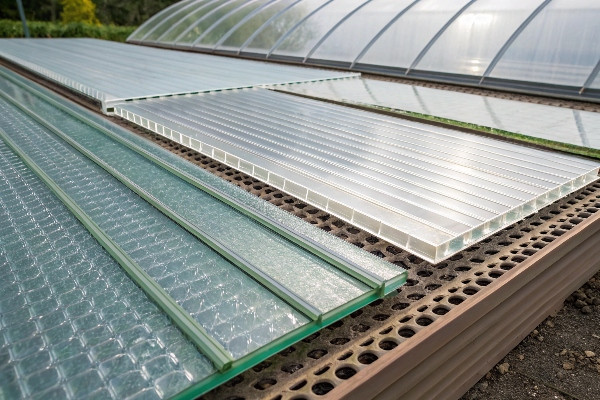
Glazing selection represents one of the most consequential decisions in greenhouse design. Working with cannabis cultivators across various climate zones, I’ve found that the ideal glazing solution depends on a balance of factors including light transmission, insulation value, durability, and budget.
Glass remains the premium option for many commercial cannabis operations. Modern horticultural glass transmits up to 90-95% of available light and maintains this transmission rate for decades with proper maintenance. Tempered or laminated safety glass offers excellent durability and is virtually impermeable to pests and contaminants. For cannabis operations in northern climates, double-glazed glass with low-E coatings can significantly reduce heating costs while maintaining light quality. The main drawbacks are higher initial cost (typically $15-25 per square foot installed) and weight, which requires more substantial structural support.
Polycarbonate panels have gained popularity in the cannabis industry for good reason. Twin or triple-wall structured panels offer superior insulation (R-values of 2-4 compared to glass at roughly 1), making them excellent for operations in extreme climates. The diffused light created by polycarbonate can be beneficial for cannabis, producing more light penetration into the lower canopy and reducing leaf burn. Quality polycarbonate retains about 80% of its light transmission capabilities over a 10-15 year lifespan when treated with UV protection. For cannabis facilities concerned about security, polycarbonate also offers better impact resistance than glass.
Polyethylene films represent the most economical option, typically costing $0.50-1.50 per square foot. Modern greenhouse films include IR barriers, anti-condensation treatments, and UV stabilization that can extend lifespan to 4-5 years. The light diffusion qualities of certain films can be particularly beneficial for cannabis. I’ve observed excellent results with films that combine high light transmission (88-92%) with light-diffusing properties. For operations in developing markets or those testing new cultivation methods, film provides a lower-risk entry point.
For cannabis specifically, we must consider light deprivation capabilities. Some cultivation strategies require precise control over the photoperiod, necessitating blackout capabilities. When implementing light deprivation systems, the glazing material must be compatible with the blackout mechanism. Films and polycarbonate typically work well with sliding or rolling blackout systems, while glass greenhouses often require more complex and costly blackout solutions.
Regional climate considerations cannot be overlooked. In high-humidity environments like Southeast Asia, materials resistant to algae growth and condensation are essential. For operations in regions with extreme weather, impact resistance becomes paramount—making polycarbonate an attractive option despite its higher cost relative to film.
Conclusion
The optimal cannabis greenhouse combines precise climate control, efficient lighting, robust security, and appropriate glazing materials—all customized to your specific climate conditions and production goals. These technical specifications work together to maximize yields and quality.
Explore this resource to understand essential components and best practices for securing cannabis greenhouses effectively. ↩

